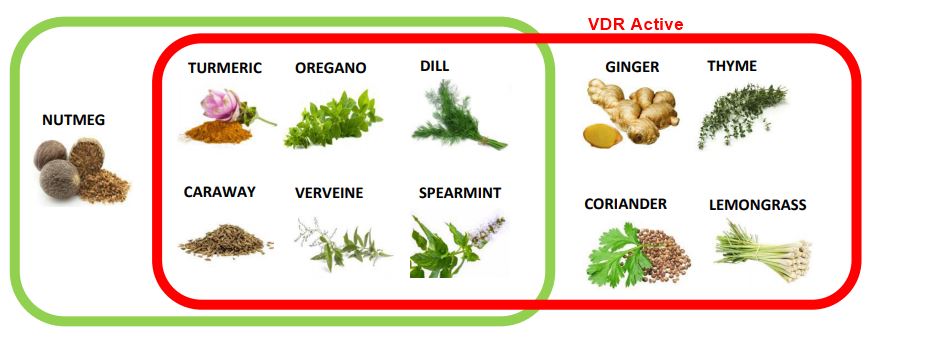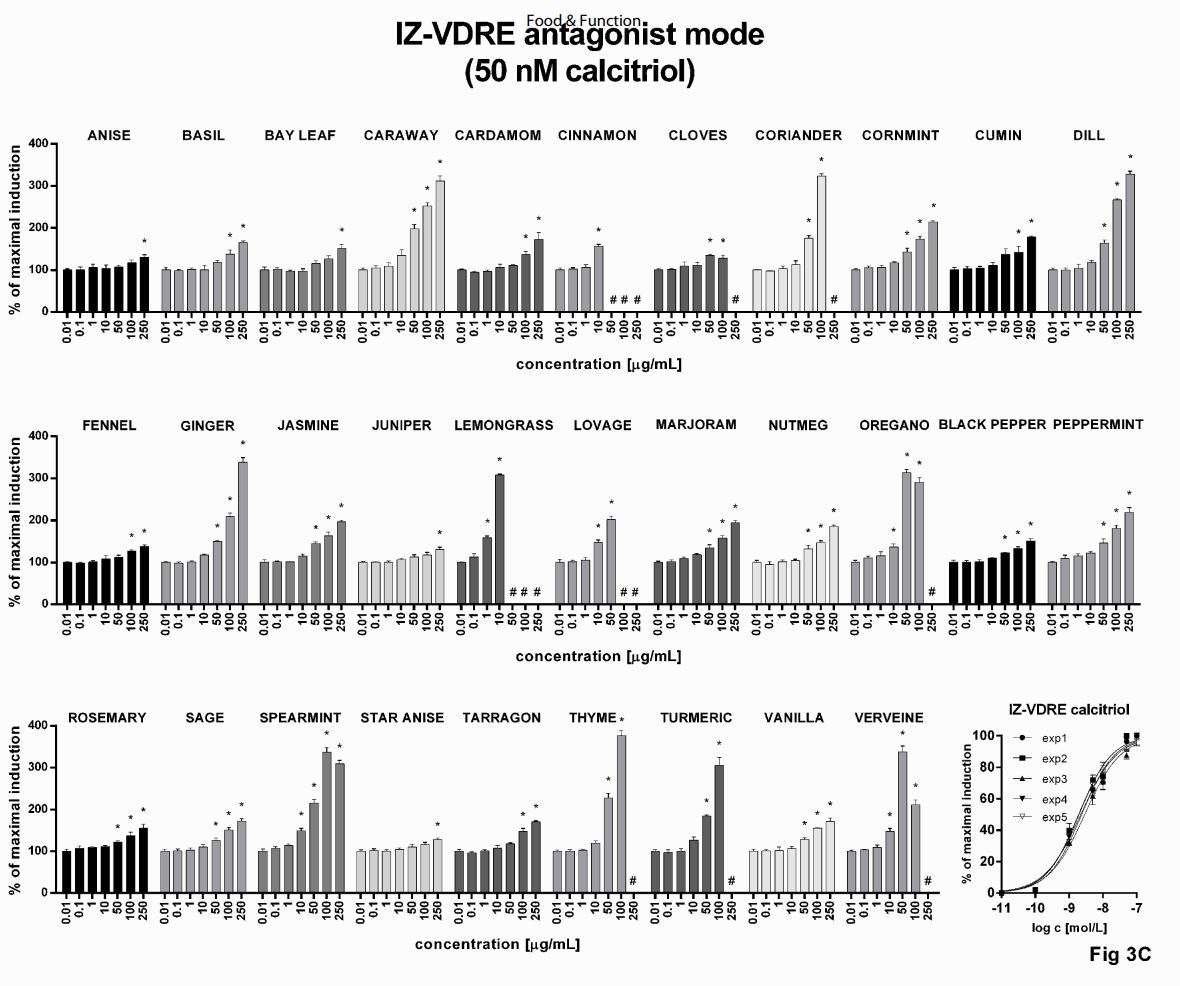Vitamin D receptor is activated somewhat by ginger, thyme, coriander, and lemongrass
Assessment of endocrine disruption potential of essential oils of culinary herbs and spices involving glucocorticoid, androgen and vitamin D receptors
Food and Function Journal, 10.1039/C7FO02058A
Iveta Bartonkova and Zdenek Dvorak
📄 Download the PDF from Sci-Hub via Vitamin D Life


1. = not tested
Essential oils (EOs) of culinary herbs and spices are consumed on common bases. They are multicomponent mixtures of compounds with already demonstrated biological activities. Taking in account regular dietary intake and the chemical composition of EOs, these may be candidates for endocrine disrupting entities. Therefore, we examined the effects of 31 EOs of culinary herbs and spices on the transcriptional activities of glucocorticoid receptor (GR), androgen receptor (AR) and vitamin D receptor (VDR). Using reporter gene assays in stably transfected cell lines, weak anti-androgen and anti-glucocorticoid activity was observed for EO of vanilla and nutmeg, respectively.
Moderate augmentation of calcitriol-dependent VDR activity was caused by EOs of
ginger,
thyme,
coriander and
lemongrass.
Mixed anti-glucocorticoid and VDR-stimulatory activities were displayed by EOs of turmeric, oregano, dill, caraway, verveine and spearmint.
Remaining 19 EOs were inactive against all receptors under investigation. Analyses of GR, AR and VDR target genes by the means of RT-PCR confirmed VDR-stimulatory, but not anti-glucocorticoid and anti-androgen effects of EOs. In conclusion, while we observed minor effects of several EOs on transcriptional activities of GR, AR and VDR, the toxicological significance is very low. Hence, 31 EOs of culinary herbs and spices may be considered safe, in terms of endocrine disruption involving receptors GR, AR and VDR.
